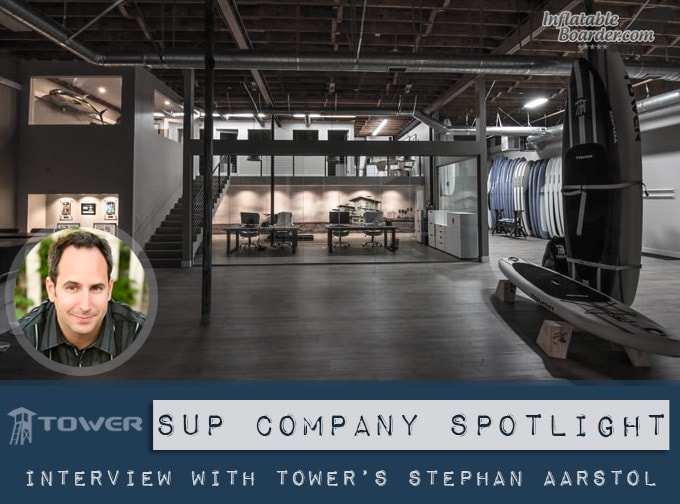
In this edition of SUP Company Spotlight, InflatableBoarder.com sits down with Tower Paddle Boards founder and CEO, Stephan Aarstol. In 2017, Stephan was named as one of San Diego’s top 10 most influential business leaders by Our City San Diego Magazine, and Tower was featured on ABC’s 20/20 in 2017 as one of the best investments all-time in the history of Shark Tank thanks to their direct-to-consumer business model. In addition to the ultra-popular lineup of Tower paddle boards, the company also has a growing line of beach lifestyle products…
How were you initially introduced to the sport of stand up paddleboarding?
Through a buddy of mine that I traveled with a long time ago — we backpacked when I was in college in San Diego. We went out and I fell in love with it — it’s a lot easier than surfing. I started in the waves, not flat water, and it was just a lot easier than surfing. I was like, “Holy cow, this is pretty cool”, so I went and got a board.
And then, I had an Internet business at the time selling high end poker chips, and I’ve had that since about 2004, and when I went to buy a paddle board I was looking at super expensive boards. I thought it was kind of ridiculous that they were so much more than a surfboard, so when I started looking in to it I realized how fast the industry was growing and how everybody was doing it the old traditional way, so I thought a direct consumer product at half price, basically the same board from the same factory, would sell really well. So, I sort of jettisoned a business plan that I was in the middle of, a green energy online Internet portal, and started a paddle board company.
What ignited the spark in you to get involved in the industry?
It was opportunity — it was really cool and not a lot of people were doing it yet. Although, I started in 2010 and at the time I think it was probably 5-7 years old and growing at 100% a year for the last 3 or 4 years. It was growing, but it really hadn’t taken off. I realized that I was a little bit ahead of the curve, and there was an opportunity because going by direct to the consumer I could basically bring this product at half price. We prototyped some boards here in San Diego and had them made overseas, and we started pre-selling and the first container sold out before it even landed on U.S. soil.
How important have good employees been to your success?
Very important. Fortunately, we’re in the action sports industry and people see us as more of a surf company than a paddle board company, and now we’re sort of holistic beach lifestyle. But, it’s very easy to hire people in that space in San Diego.
In 2010 when I started the company, the market had just crashed and the labor market was horrible, but for an employer that means that the labor market is great as it was really easy to hire great people, and I was able to. Several of those people, I think 3 of the first 4 people that I hired, have already gone out and they’ve got their own Internet businesses, some doing a million a year. We’ve been able to hire great talent, and sort of train them up and get them off in the world. We seem to be able to attract good people.
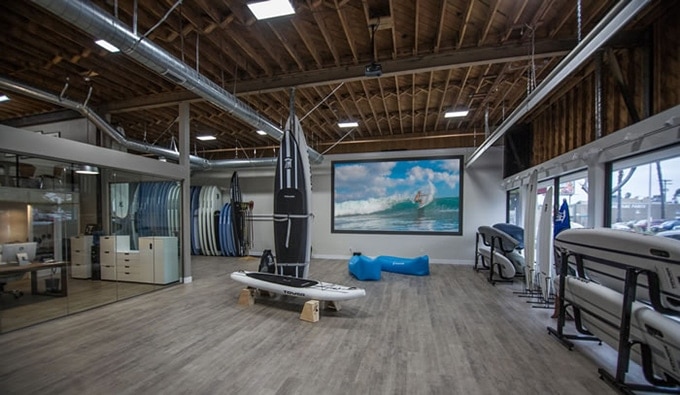
If you had a chance to start your company over again, what would you do differently?
Well, the one thing is that we started in hard boards, everybody was into the hard paddle boards at the time. My theory was that everybody was focusing on the sexy part of the market — the surf market and the racing market — and there was this big middle market of people on lakes and rivers, and that’s what actually happened to be true. But then we also were an Internet company, so we looked at this and saw that we had to put these hard boards on a freight truck, it costs $150 to send it anywhere, if it gets damaged it’s $150 back — this is a nightmare Internet company because of the freight issue. There were these inflatable boards on the market, and we realized that they can be rolled up into a 35 pound package that can be shipped by UPS.
That was a much more attractive market to us, but the inflatable boards really sucked at the time — they were 4″ thick because everybody was coming from the surf industry where boards are 2.75″ thick or whatever, and they thought 4″ was totally crazy. So we started experimenting — we made a 6″ board, we made an 8″ board, so this sort of solved the inflatable paddle board problem.
There were two companies at the time that were sort of dipping there toes there, it was us and I believe Naish. So we both came out with a 6″ thick board about the same time, and that revolutionized the industry in my opinion because all of the sudden inflatable boards were on par with hard boards because they were rigid enough.
We really invested in that — we saw that coming along, but we really didn’t start production on those for about 18 months because we didn’t have the money. This whole thing was bootstrapped — my poker chip company was dying, and then we went on Shark Tank and got about $150,000 in investment from Mark Cuban and used that to buy the inflatables. We didn’t really realize the opportunity of inflatables, how big it was. When we got into the market, inflatables were probably 1% of the market of paddle boards. Fast forward to today — it’s probably 30%-35% of the market. We really should have went out and got money, gotten into the inflatables right away, and sort of went all in earlier. I mean, we did, but we sort of stumbled and tripped into it because Shark Tank called us out of the blue to be on their show. We got this investment, we have this money, what do we do with it?
So, it wasn’t really the master plan — we knew it was going to be a cool market and a better business model for us, but I would have done that faster. But, a lot of that stuff is hard to know. Most people we were talking to on the phone were telling us that they weren’t interested in inflatables, and we’d say, “No, you don’t realize!”. So, it’s taken people 3 or 4 years to sort of catch onto that now. If you look in the industry, every paddle board company has an inflatable board, I’d say. 3 years ago, it was 10%-20% of paddle board companies had inflatables.
What have been some of your failures, and what have you learned from them?
We’ve churned through a lot of people. I’m hiring young, bright people, but they move on quickly. It’s hard to retain people — as soon as they learn some of these skills, those people go off on their own and do their own thing. So that’s constantly a challenge in our business.
Some other things that we’ve made mistakes on is in manufacturing. We stumbled around a little bit when we first started — we went to the best manufacturers in the world — we went to Thailand. Those manufacturers were on board with us, and then at the last moment they’d pull out and say that they couldn’t make boards for us if we were going to sell them that cheap because it would upset the big brands that they make for who sell through traditional channels.
So, we got blocked from manufacturing in the best factories in the world and we had to go to China and figure out our factories. And then, we were in another factory in China, and whatever the company was that was selling to Costco at the time, they saw us as a threat so they told our manufacturer that they could no longer make boards for us. So, that manufacturer stopped making boards for us. Nobody would make boards for us because we were a threat to the other players, and so I wish we would have spent more time nailing down the manufacturers and getting agreements with them for long term arrangements.
How many hours a day do you work on average, and what does your typical day look like?
About 2 and a half or 3 years ago, we moved our whole company to a 5 hour workday. So, 8am to 1pm, straight through with no lunch.
At the time we did it in 2014, we were the fastest growing company in San Diego, a city of about 3 million people. I think we did $5 million in revenue that year — a fast growth, highly profitable company. There were only 5 or 6 people in the company. We knew that we could work faster and be more efficient than other people, and we wanted to prove that we could have a better lifestyle.
And that’s really how I’ve worked the last 10 or 15 years, just because I’ve owned my own Internet business — get to the office, get my work done, and get out of there — really focus in on what are the important things to do. I think that allows you in today’s world with automating a lot of your systems, automating your sales function, automating your marketing, automating everything — you really can do that. I think it’s a misnomer in the startup world that you have to work 15 hours a day, 90 hours a week, for years on end. You do have to do that a little bit in the beginning, no doubt. But longterm, once you get things up and dialed in, you don’t want to throw hours at stuff. You want to take hours away and then figure out where you’re wasting your time and really focus in on those and double down on the important hours.
That’s something I’m trying to teach my whole team. I actually wrote a book on the topic called The Five-Hour Workday, so you might want to check that out. That was last summer — we got press in over 20 countries, I was named the world’s best boss by the biggest paper in Germany, I did 4 or 5 national TV shows, and we got hundreds of different press coverage mentions. It was really well received, because I think a lot people understand this idea that we’re still managed by the clock but we’ve become so much more productive over the last 30 years, that a lot of people are just wasting half of their day on Facebook, or online shopping, or fantasy football, or whatever they’re doing in the office, and they only get 2-3 hours of good work done.
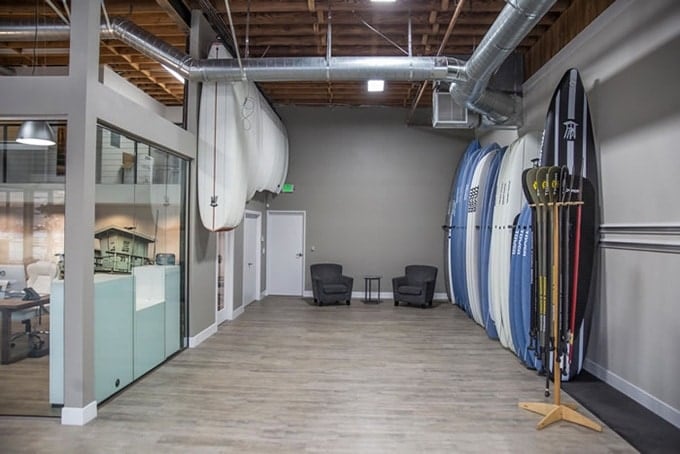
How do you define success?
I think success is #1 happiness, #2 the ability to choose what you’re going to do and do something meaningful.
What do you enjoy most about being involved in the SUP industry?
When I look at businesses, if you’re in the Internet space you can apply the same business models to anything. I could be selling cigarettes, I could be selling poker chips, I could be selling paddle boards, I could be selling payday loans, or I could be selling fat loss supplements — I always try to look at what products are going to enhance the world, as opposed to being sort of a parasite. So that’s very important to me.
I think with poker chips, a lot of people see gambling as negative, but I see poker as a way to get together with friends and it’s something I can get behind. With paddleboarding, there’s no downside to paddleboarding. You’re basically doing it with friends, you’re spending more time in nature, you’re getting in shape, you’re getting sun, it’s a social thing, you’re doing it with family — I mean, there’s no downside to it. So that was something that I thought I would like to be spending my time and my expertise on trying to grow a business like that.
And now, we’ve sort of morphed that from paddleboarding and now we have sunglasses, snorkeling equipment, surfboards, skateboards — all of this stuff which is Tower-branded and Tower-made, and we sell them direct to the consumer for half the price. So the larger business model here is not just about paddleboarding, but it’s about the direct to consumer business model and the idea today that you don’t really get what you pay for anymore in the modern world. You get whatever distribution channel you buy through.
So, there’s an opportunity across every market to cut prices in half and go direct to the source, and we’re doing that for everything in the beach lifestyle niche. We designed Tower like that — we thought paddleboarding was this huge, growing sport, but we thought longterm in surf shops, they don’t make money on surfboards, right? They make money on their soft goods — the clothes, the brand around the surfboard. So we kind of figured that same thing, and paddleboarding may or may not go there. But we wanted paddleboards to be one spoke in a larger wheel of all of these product offerings that we have, and that’s where we would basically cut our teeth.
Where do you see the paddleboarding industry in 10 years? 20 years?
I think it has legs. I mean, there’s a couple things going on here. If you look at the windsurfing market, it has almost completely died and been largely eaten by the kitesurfing industry, so a tweak to that changed it entirely.
And then you look at the surfing market, and it’s a pretty stable market, but a very small market — in the U.S. you’ve got like 2.5 million people. If you look at the kayaking market in the U.S. — 25 million people. So when we originally looked at this, we asked, “What market does this really fit into?”, and I think it’s actually closer to the kayak market than the surf market.
But then I can’t deny the fact that the growth of stand up paddleboarding was driven by celebrities paddleboarding, and you see it in People Magazine, or some magazine on some tropical beach — everybody’s like, “That’s cool, I’ll try it”. So there’s definitely this cool factor to it which caused a massive boom.
I’ve seen this before in the poker chip market that was driven by people playing poker on TV. So there was this massive boom and then a bust. So my poker chip business is about 1/10 of what it was in 2007 and 2008, so there’s a potential there. And that was another reason for wanting to diversify — let’s bring out surfboards, skateboards, sunglasses. I immediately wanted to diversify because I’ve seen that thing happen before, and I think that will happen to a degree in paddleboarding. There’s a lot more competition coming into it, so that puts price pressure on, and you really have to have a brand that people can stand by because I’m already starting to see these quick buck companies that paid no attention to branding or any of that — just really transactional businesses — that are coming and going, and that creates a lot of turbulence in the market.
I think it does have staying power, but I think there’s definitely going to be a little bit of a bubble that will burst and I think a lot of paddle board companies will go out of business — I would say 80% of them will go out of business in the next 5 years. That’s what happened with the poker chip company — manufacturers went out of business, you’re already seeing that in the hard board manufacturers, so there’s going to be rough times ahead. I’ve seen this before so I’m aware of it. We’ve already diversified and if we keep our costs incredibly low — and we’re able to do that because we’re an online company — we’ll be good.
Follow Tower Paddle Boards: Website, Facebook, Twitter, Instagram



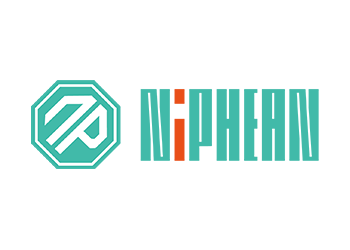
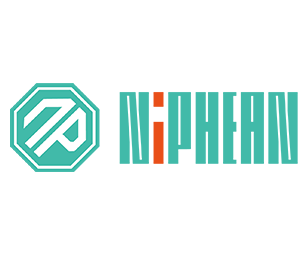


Leave a Reply